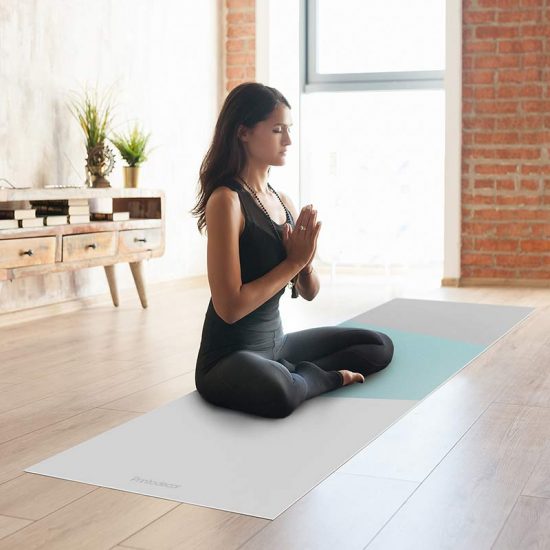
As a yoga practitioner, one of the most important pieces of equipment you’ll need is a yoga mat. It not only provides cushioning and support, but it also serves as a boundary for your personal space during practice. However, choosing the right size yoga mat for your body can make a big difference in your comfort level and overall practice experience. In this article, we’ll discuss the factors you need to consider when choosing the right size yoga mat for your body.
Why is Choosing the Right Size Yoga Mat Important?
Choosing the right size yoga mat is important for several reasons. Firstly, it affects your comfort level during practice. A mat that’s too small can cause you to slip or slide, which can be distracting and affect your balance. A mat that’s too large can be cumbersome and make it difficult to move between poses.
Secondly, choosing the right size mat is important for your safety. If you’re practicing on a mat that’s too small, you run the risk of injuring yourself by slipping off the mat. On the other hand, a mat that’s too large can cause you to trip over the edges, especially if you’re practicing in a group class.
Factors to Consider When Choosing the Right Size Yoga Mat
Body Size
The first factor to consider when choosing the right size yoga mat is your body size. If you’re taller or have a larger body frame, you’ll need a longer and wider mat to accommodate your size. Standard yoga mats are usually 68 inches long and 24 inches wide, but there are longer and wider options available.
Taller individuals should consider purchasing a mat that’s at least 72 inches long, or even 84 inches for those over 6 feet tall. Wider mats are also available, with a width of up to 36 inches, which can be helpful if you have broader shoulders or hips.
Practice Style
The second factor to consider when choosing the right size yoga mat is your practice style. If you’re practicing a style that involves a lot of movement, such as Vinyasa or Ashtanga, you may prefer a mat that’s narrower to allow for easier movement between poses. A narrower mat also allows you to move closer to your instructor during a group class.
If you’re practicing a style that involves longer holds, such as Yin or Restorative, you may prefer a wider mat to allow for more space to move around and get comfortable in each pose. A wider mat also allows you to spread your knees wider in seated poses.
Portability
The third factor to consider when choosing the right size yoga mat is portability. If you’re traveling frequently or prefer to bring your own mat to a group class, you may prefer a mat that’s lightweight and easy to carry. A thinner mat is usually lighter and more portable than a thicker mat, which can be heavier and bulkier.
If you’re traveling by plane, you may also want to consider a mat that can be easily rolled up and stored in your luggage. Some mats are designed to be foldable or come with a carrying case for easy transport.
Budget
The fourth factor to consider when choosing the right size yoga mat is your budget. Yoga mats come in a range of prices, from budget-friendly options to high-end mats made with premium materials. While it’s important to invest in a good quality mat, you should also consider your budget and choose a mat that meets your needs without breaking the bank.
In conclusion, choosing the right size yoga mat is important for your comfort, safety, and overall practice experience. When choosing a mat, consider your body size, practice style, portability, and budget. It’s also a good idea to try out different sizes before purchasing a mat to see which one feels most comfortable for your body. Remember that the right size mat can make a big difference in your practice, so take the time to choose one that’s right for you.

